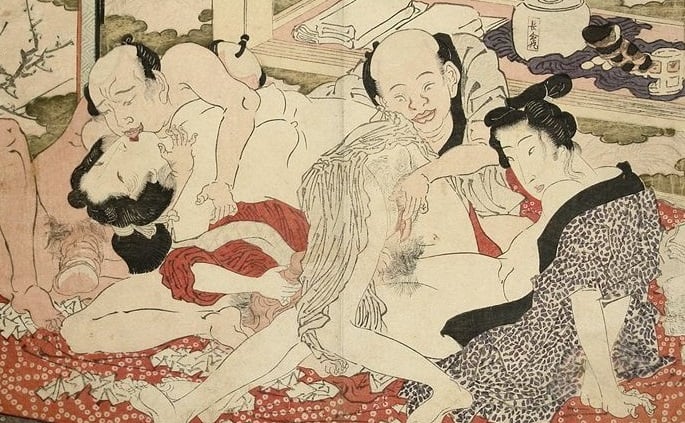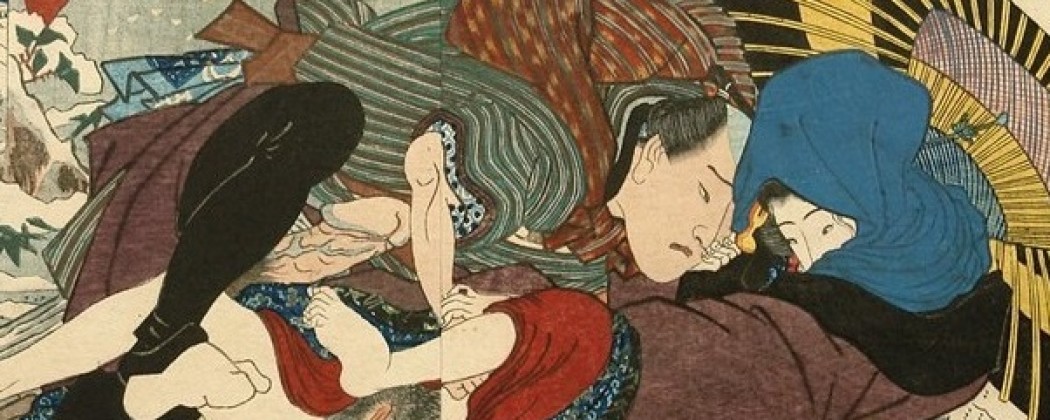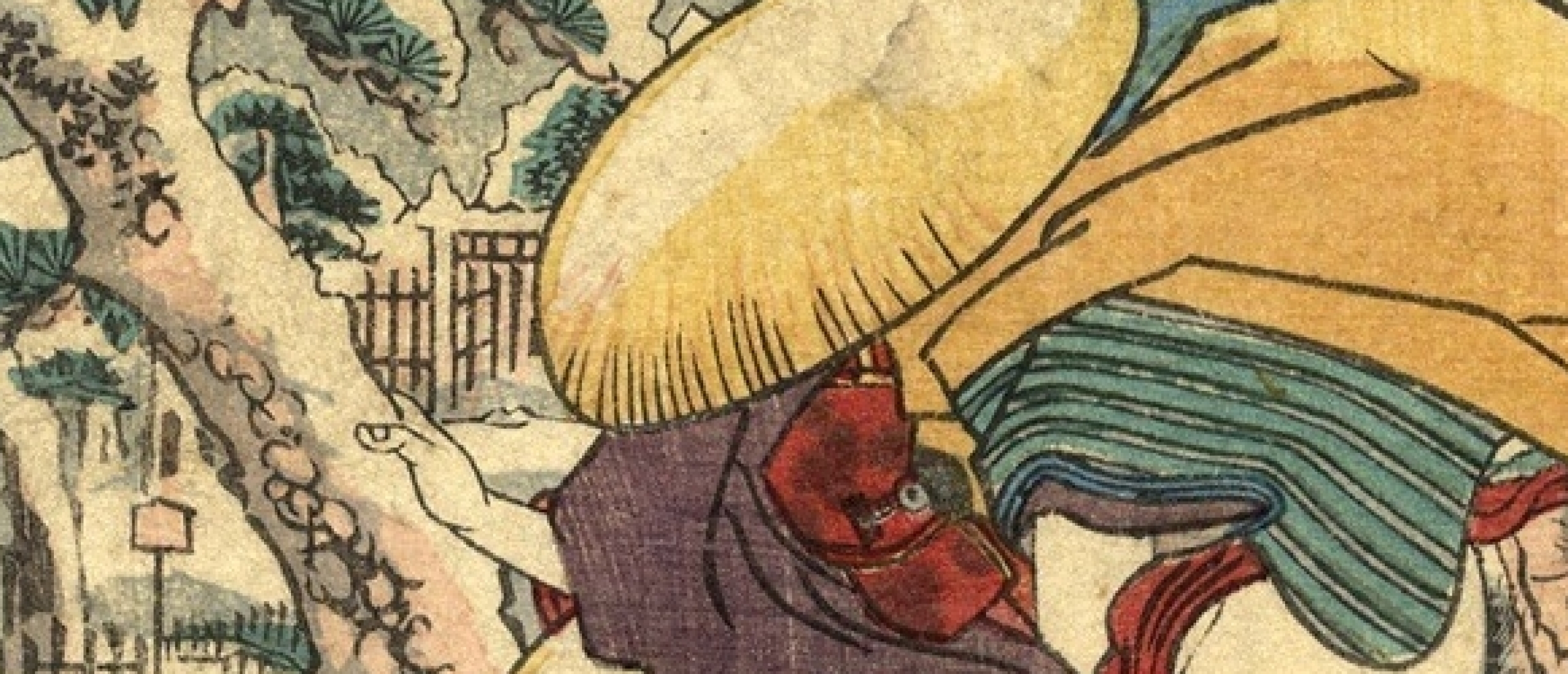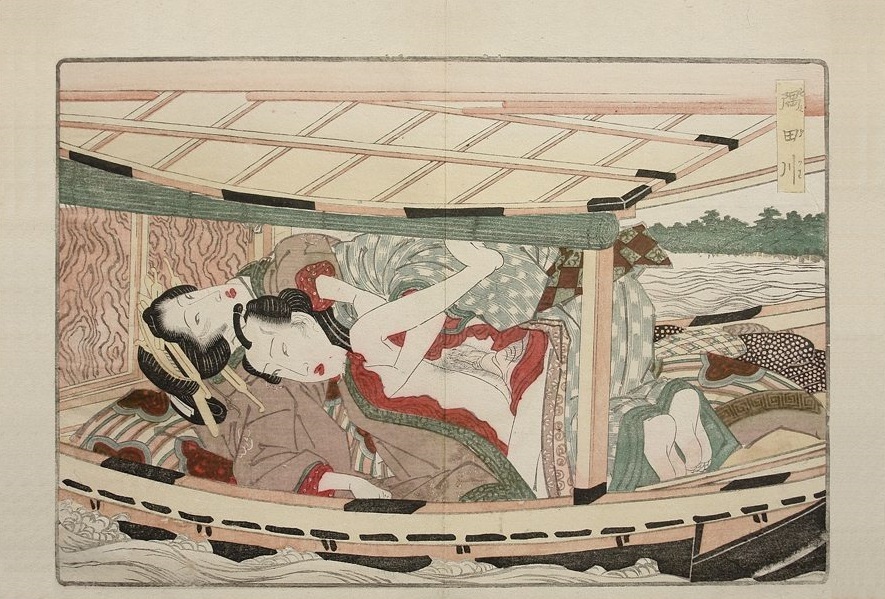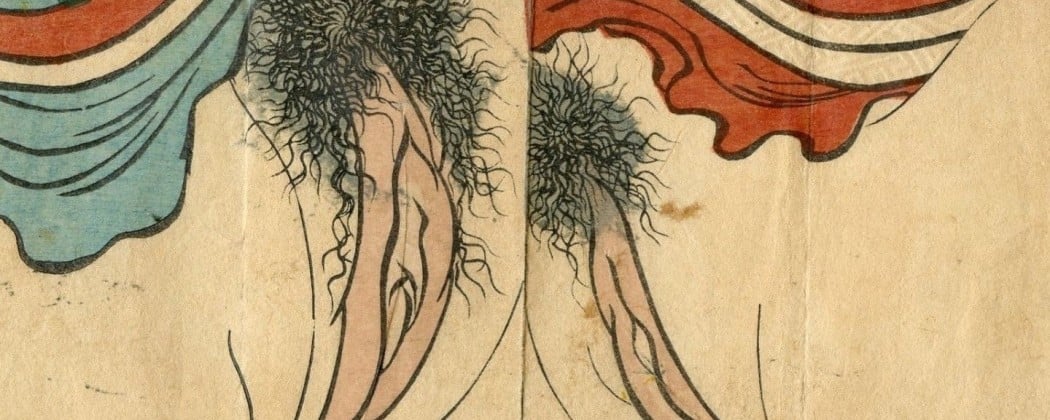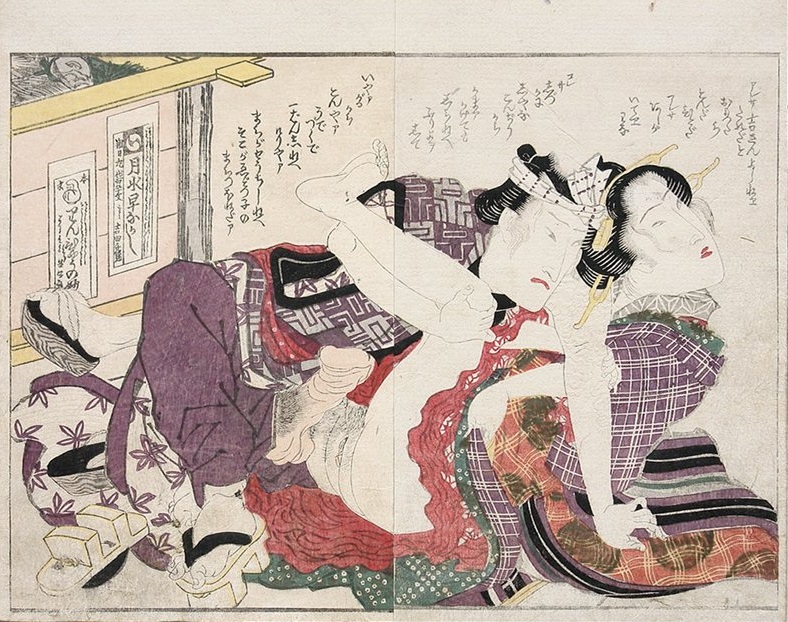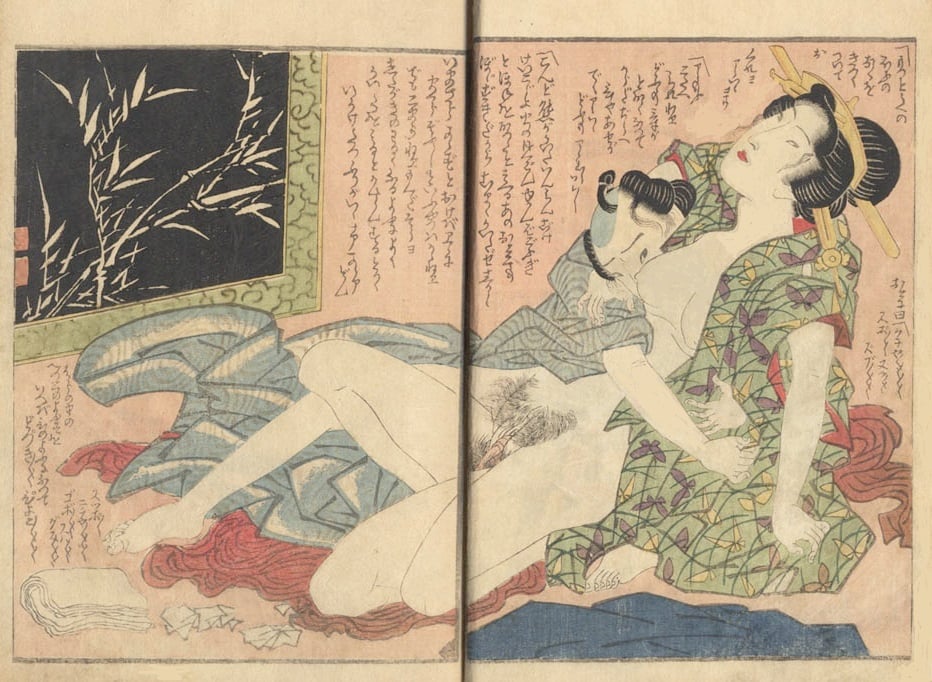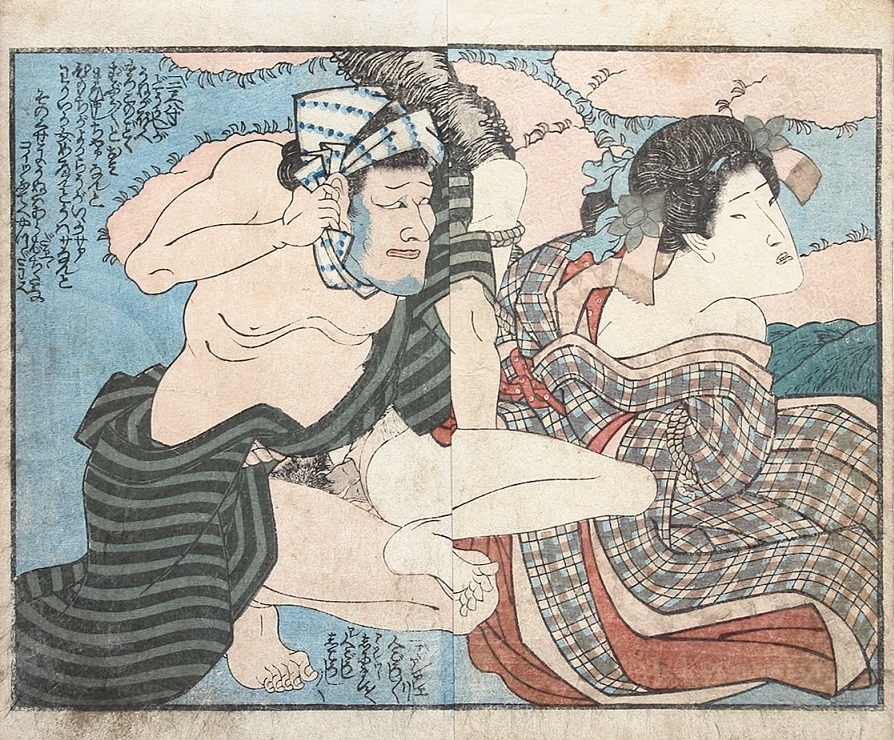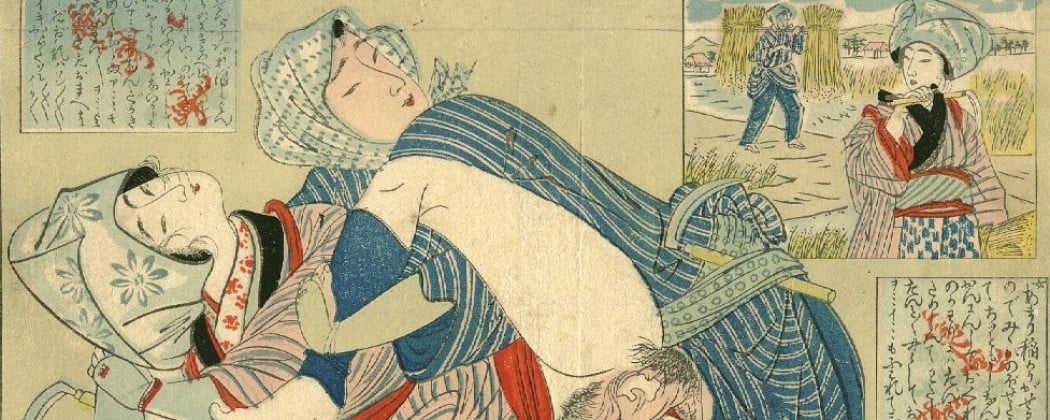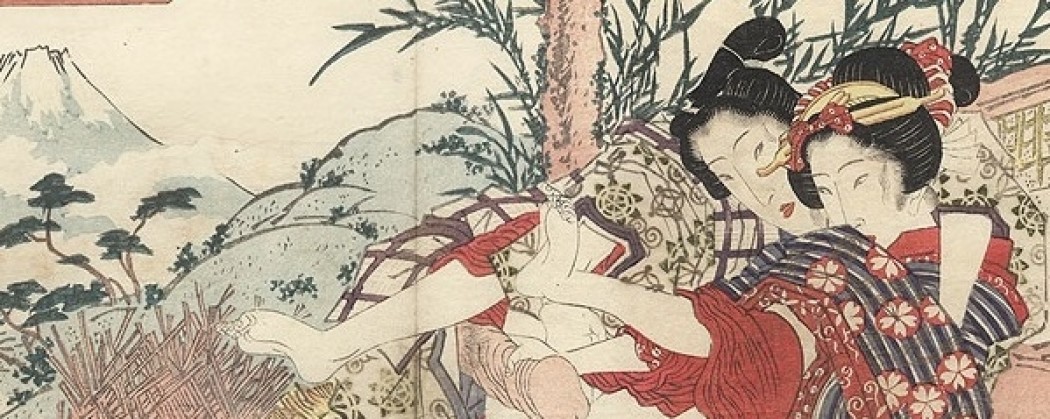
The title of the shunga design treated here is ‘The Tale of the Bamboo Cutter (Taketori monogatari)’ It is one of the best designs from the masterpiece series ‘A Light Spring Snow (Haru no usuyuki)’ designed by Keisai Eisen (1790-1848), published in 1822.
Below I have added two quotations of ukiyo-e experts who discuss this design in detail.

‘The Tale of the Bamboo Cutter (Taketori monogatari)’, c.1822. Series: ‘A Light Spring Snow (Haru no usuyuki)‘
On ‘The Tale of the Bamboo Cutter’ design:
“[…]…we revert to a scene of young love, as boy and girl prepare to couple at a foothill site near Mt Fuji. The girl gazes shyly at her young lover, but with her right hand, she provides that most significant welcome of all. The print represents a masterful combination of figures and landscape, revealing that – as Eisen was to make evident in his later work – the artist possessed his own, creatively evocative manner in the landscape print, only marginally indebted to his mentor, Hokusai.” (Dr. Richard Lane)
“The Tale of the Bamboo Cutter (Taketori monogatari). The print title refers to an early work of Japanese prose of the same name, most probably written between 850 and 950. It recounts the tale of a bamboo cutter who by change finds a little girl in a bamboo culm. He raises her as his own daughter.
She blossoms into a beautiful woman (she is actually a princess) and has many aristocratic suitors – even the Emperor is smitten with her. But she accepts no-one and finally reveals that she must leave this earthly world for the supernatural realm from whence she came.
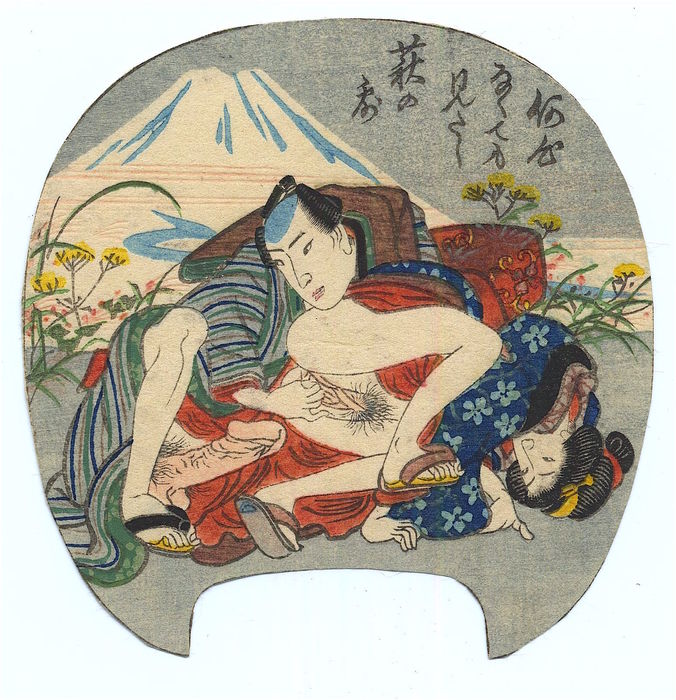
Uchiwa-e (fan print) with a ’couple making love near Mount Fuji’ (c.1830) by a member of the Utagawa school
A few items in Eisen’s print point to this tale, in particular, the baskets made of young bamboo leaves that were the main stay of a bamboo cutter’s livelihood, and the young bamboo plants in the background. The couple in the foreground – the young woman holds firm the man’s penis and her own genitalia are fully exposed – is a stark contrast to the tale of the young princess who refuses to fall in love. Visible in the background is Mount Fuji, where the love-sick emperor burns the letter and the elixir of life given to him by the princess before she departs.
There may also be another narrative layer: bamboo, especially young bamboo shoots (takenoko), were popularly likened to male genitalia. ‘Taketori’ (literally, ‘taking bamboo’) is thus imbued with the additional meaning of ‘grabbing or taking the penis.’ (Chris Uhlenbeck in Japanese Erotic Fantasies)
Click HERE to find out why Eisen was such a decadent artist!
This piece is available in our gallery. You can find the price and more info on the following page!

